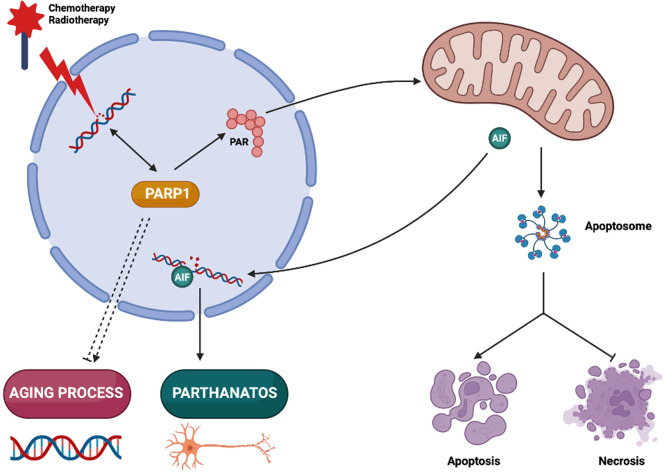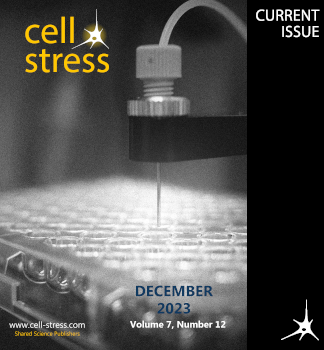聚(adp -核糖)聚合酶-1及其在细胞生死中的模糊作用。
IF 3
Q2 CELL BIOLOGY
引用次数: 1
摘要
编码聚adp核糖聚合酶1 (PARP1)的基因缺失或其药理抑制作用可保护小鼠免受脑缺血和帕金森病的影响。与之形成鲜明对比的是,PARP1抑制剂在临床上用于清除易感癌细胞。过度的PARP1激活似乎参与了一种称为parthanatos的特定细胞死亡途径,而在癌细胞中抑制PARP1会将DNA损伤放大到致死水平。因此,PARP1在细胞命运决定中起着上下文依赖的作用。此外,PARP1似乎在机体衰老中起着不明确的作用。本文章由计算机程序翻译,如有差异,请以英文原文为准。

Poly(ADP-ribose) polymerase-1 and its ambiguous role in cellular life and death.
The deletion of the gene coding for poly(ADP-ribose) polymerase-1 (PARP1) or its pharmacological inhibition protects mice against cerebral ischemia and Parkinson's disease. In sharp contrast, PARP1 inhibitors are in clinical use for the eradication of vulnerable cancer cells. It appears that excessive PARP1 activation is involved in a specific cell death pathway called parthanatos, while inhibition of PARP1 in cancer cells amplifies DNA damage to a lethal level. Hence, PARP1 plays a context-dependent role in cell fate decisions. In addition, it appears that PARP1 plays an ambiguous role in organismal aging.
求助全文
通过发布文献求助,成功后即可免费获取论文全文。
去求助
来源期刊

Cell Stress
Biochemistry, Genetics and Molecular Biology-Biochemistry, Genetics and Molecular Biology (miscellaneous)
CiteScore
13.50
自引率
0.00%
发文量
21
审稿时长
15 weeks
期刊介绍:
Cell Stress is an open-access, peer-reviewed journal that is dedicated to publishing highly relevant research in the field of cellular pathology. The journal focuses on advancing our understanding of the molecular, mechanistic, phenotypic, and other critical aspects that underpin cellular dysfunction and disease. It specifically aims to foster cell biology research that is applicable to a range of significant human diseases, including neurodegenerative disorders, myopathies, mitochondriopathies, infectious diseases, cancer, and pathological aging.
The scope of Cell Stress is broad, welcoming submissions that represent a spectrum of research from fundamental to translational and clinical studies. The journal is a valuable resource for scientists, educators, and policymakers worldwide, as well as for any individual with an interest in cellular pathology. It serves as a platform for the dissemination of research findings that are instrumental in the investigation, classification, diagnosis, and therapeutic management of major diseases. By being open-access, Cell Stress ensures that its content is freely available to a global audience, thereby promoting international scientific collaboration and accelerating the exchange of knowledge within the research community.
 求助内容:
求助内容: 应助结果提醒方式:
应助结果提醒方式:


